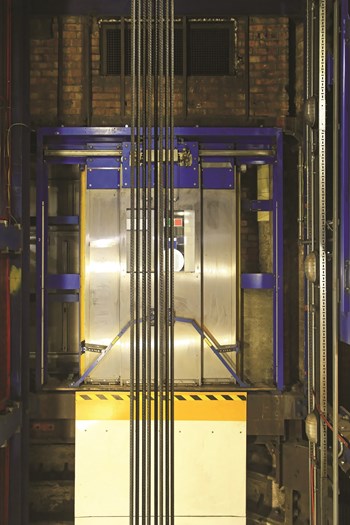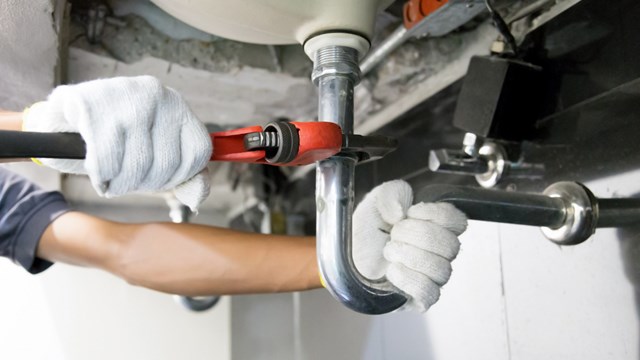
Building amenities such as elevator systems are sometimes taken for granted. What goes up, after all, must come down, and vice versa, right? But elevators are not just for convenience and awkward silent moments, they also accommodate residents unable to climb stairs, and are critical for deliveries and facilitating maintenance workers. At a certain point, no matter the age of the building, the elevator system will need maintenance and/or replacement. The key is identifying signs of wear and tear before a breakdown occurs.
“A new elevator should be treated like a new car in that it should be properly maintained and lubricated on a monthly basis,” says Frank Livoti, president of Brooklyn Elevator Inc. in Brooklyn. “A well-maintained elevator should last anywhere between 15 and 20 years, however depending on the type of elevator application, certain major parts might need to be changed in the interim.”
Even if a building owner is diligent with elevator maintenance protocols, there may come a time when the equipment becomes unreliable and the down time is increased. The resulting work required could be an upgrade or an overhaul.
“Any modification to an existing system is characterized as a modernization, which can be partial or full. A job is considered new construction when new rails are added to an existing job, or it is installed from the ground up,” explains John Miller, director of operations for the Liberty Elevator Corporation in Manhattan. He added that hydraulic elevators typically last between 25 to 30 years. Traction applications, he noted, have controllers that last 25 to 30 years as well, although the machinery may last even longer. The life span of elevator ropes are typically 10 to 15 years.
“If you’re adding an elevator to an existing building, this would be considered new construction, otherwise you can replace all elements of an elevator, besides the rails, and it would be considered a full modernization,” says Miller.
The determining factor in whether to keep repairing or fully replace an elevator, says Donald Gelestino, president of Manhattan-based Champion Elevator, is pretty straightforward. “What the issues are is that there is a lifetime expectancy of the originally installed equipment. So if the equipment goes beyond the manufacturer’s lifetime expectancy, that’s when you’d want to change equipment because if you don’t, what happens is, it becomes more expensive to just keep repairing the old equipment,” Gelestino says.
The typical life span of an elevator, he says, is about 25 years, but it depends on a number of variables.
Government Oversight
Since it’s not a question of “if” an elevator will need maintenance, but “when” it will require service, it is always best to be proactive instead reactive. While this includes yearly inspections by certified professionals, when the time comes to make a change, the city gets involved.
“The New York City Department of Buildings’ Elevator Division oversees the replacement of all elevator’s processes,” says Kenneth Breglio, president of the Bronx-based BP Elevator Company. “The elevator company files for a permit detailing the scope of work, code references for each item and layout drawings of the project. These submissions are reviewed and if acceptable, a permit for the work is issued. At the end of the project a complete safety test and inspection is performed by the Department of Buildings in conjunction with the elevator company to ensure all work was performed as listed in the permit and the elevator meets all code requirements.”
The Department of Buildings’ Elevator Division oversees the use and operation of all New York City’s elevators, escalators, amusement rides and other related devices and enforces the New York City Building Code and standards established by the American Society of Mechanical Engineers (ASME), with some modifications. The department requires notification of 10 calendar days prior to performing the test by filing a ELV36 Elevator/ Escalator Test Notification Form. If defects are discovered, the building owner has 45 days to correct the problem.
Depending on what the problem is will dictate if the elevator will be modernized or replaced. In both cases, the undertaking is expensive and time consuming. “With respect to the age and condition of an elevator, a modernization can be either recommended or required in order to pass Department of Buildings' mandated annual safety inspections,” says Livoti. “Replacing or modernizing an older elevator is recommended to make it safer for its passengers, and as well as to make the device more energy efficient, thus cutting down on energy costs for the building.”
Modernization and Going New
If a building deems it necessary to undertake a capital improvement project such as an elevator system, the building not only has to adhere to city codes, but is charged with hiring the right contractor and consultants for the job.
“Total replacement is usually required when replacement parts are no longer available, the equipment has far outlived its life expectancy, or the repairs and additions required to meet current codes make it more cost-effective to replace with a modern type system,” says Breglio. “All elevators have a maintenance contract, but most times it is an age, an obsolescence issue rather than a maintenance issue.”
Depending on the size and scope of the building and its elevator system, there are a wide range of issues related to how old equipment is shut down, dismantled and removed. The manner in which new equipment is brought in, installed, and brought online is equally challenging.
Miller explains that in most cases a team of two professionals will assess the elevator systems. The first step is securing the hoistway to prevent any unintended movement. Next, the controller, the driving machine, and door equipment would be dismantled and removed. In some cases, machine room walls or ceilings have to be removed in order to access the old equipment. Installing new equipment installation is similar. Many buildings also have a “scuttle hole” in the elevator equipment room that allows workers to hoist the old equipment out through a lower floor, and use the same hole to hoist the new equipment in. In other cases, cranes are positioned on building roofs to aid in the construction.
“When a new machine is installed it is followed by the controller, where minor wiring would be performed to put the elevator in a temporary run position, which allows the men to manually move the elevator within the hoistway to complete the door operator work, wiring and miscellaneous hoistway work,” explains Miller. “Then, they would fully wire the elevator to the new controller for automatic use. It is then tested by the inspector and any relevant agencies under a full load condition. All safety devices are checked and overall elevator performance is tested. The inspector then supplies a certificate of occupancy and the elevator is turned over for passenger use.”
Under the auspices of the Department of Buildings, New York City has strict regulations regarding inspection and maintenance of elevators and escalators, according to Gelestino. Every year, a certified professional must do a third party witness test and every five years, a full load safety test must be conducted. Some elevators, depending on their condition, may need monthly inspections or repairs.
The costs related to modernize an elevator varies widely based on scope, building conditions, and locale. As such, it is difficult to provide actual costs. In order to provide scope, Livoti offered a hypothetical project.
“As an example, for a six-story building we can give a ballpark estimate of $125,000 to $150,000 to replace the elevator using a reputable elevator manufacturing equipment,” he says. “This number can change depending on what features the customer would like to add and what kind of elevator cab they would like to have installed.”
Gelestino agrees with Livoti that $125,000 to $130,000 is the ballpark figure for a full and complete modernization, but the pricetag could go up from there.
Miller adds that it is difficult to speculate on costs because there are so many variables. “Depending on the building usage, rise, equipment, cab finishes, etc., the price can vary dramatically. Many times, an elevator consultant is hired to perform a comprehensive survey of the building and determine what extent of a modernization is needed,” he says. “For new installations, architects, engineers, consultants, and the elevator company collaborate to determine the best application for a building’s needs and budget.”
Managing Residents’ Expectations
If it is determined that elevator maintenance is required, building administrators and board members are required to prepare residents for the inevitable disruptions as well as keep them informed as the project progresses. Whether a repair or a replacement project, experts advise providing as much notice as possible.
“This is a large concern and unfortunately there is no answer. Once the work starts it cannot be placed back in until all work is completed and is inspected, tested and approved by the Department of Buildings. Sometimes buildings will choose an accelerated schedule with us working six days per week, 10 to 12 hours per day,” says Breglio. “This can decrease the out-of-service time by three to four weeks, depending on the size of the job. As far as job progress is concerned, most buildings hire an elevator consultant to write the specifications for the job. This ensures that everyone is bidding on the same scope of work and they will monitor the progress of the job and report to the building.”
To keep the peace, Livoti says that communication is critical when undertaking an elevator maintenance project. “As an elevator company, we work with our customers and provide them with a time frame of how long a given project is expected to last. Once we pass the manufacturing stage and are closer to delivery of parts, we work with administrators and management agents to inform their building tenants with the expected time frames of when the elevator will be shut down, and when it is expected to return to service. Communication is key for both the elevator company and management company.”
Gelestino also believes that communication between the elevator contractor and building management is important so that residents know when the project will take place and how long it will take. With a modernization/replacement project, there typically is a lot of lead time but a repair, especially when safety is involved, can be an emergency situation when there is not a lot of time for notification.
When asked if there is a better time of year to undertake an elevator project, Breglio says he is indifferent deferring to the client’s wishes. “That decision is entirely up to the building and it varies. Some want it in the summer because most of the residents are away. Some do not want the summer because it is too hot to walk the stairs if it is a one-elevator building,” he continues. “To the elevator company, it does not make a difference.”
W.B. King is a freelance writer and a frequent contributor to The Cooperator.






6 Comments
Leave a Comment